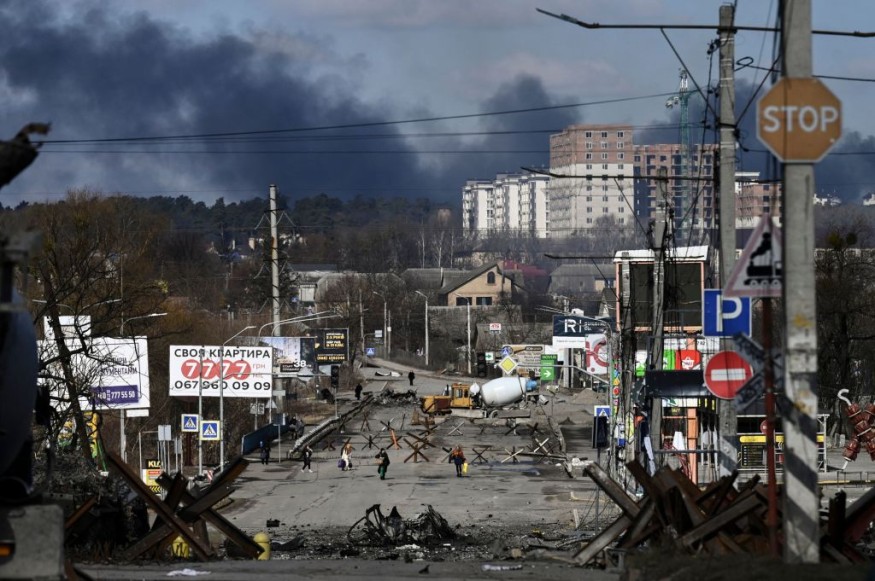Russia successfully test-fired a new nuclear-capable intercontinental ballistic missile (ICBM), which President Vladimir Putin claimed will make Moscow's adversaries pause and consider on Wednesday.
According to Russian authorities, the Sarmat's fake warhead reached its intended target on the Kamchatka Peninsula in Russia's far east shortly after launch.
The "Sarmat" ICBM dubbed "Satan II" was launched from the Plesetsk Cosmodrome in northern Russia on April 20, the Russian Ministry of Defense announced. The Russian agency also posted a video of the silo liftoff on Twitter.
🇷🇺 Successful launch of Sarmat intercontinental ballistic missile was held today at Plesetsk Cosmodrome from a silo launcher.
— Минобороны России (@mod_russia) April 20, 2022
🚀📹 Here is HD footage. pic.twitter.com/lzmygsolp8
Latest Nuclear Launch Could Reach Targets Thousands of Miles Away
Reports said the Sarmat possesses the greatest tactical and technological features and can defeat all contemporary anti-missile defense systems.
Defense intelligence website Janes added that the Sarmat is the successor of Russia's Voyevoda ICBM, also known as the SS-18 "Satan" Mod-5.
The US Congressional Research Service pointed out that each Sarmat missile will certainly be armed with 10 or more warheads. However, the ICBM is not yet ready for duty; after all, this was only its first genuine test flight, The Guardian reported.
According to CNN, Putin's flamboyant declaration about the Sarmat is likely "nuclear saber-rattling" intended to divert attention away from the issues Russia is facing during its continuing invasion of Ukraine.
The Sarmat's extreme range, estimated to be up to 35,000 kilometers (22,000 miles), lets it fly around its intended target. The missile could avoid radar and missile defense systems and strike them unexpectedly, Al Jazeera added.

It can carry up to 15 nuclear bombs, each with its own limited maneuverability, thanks to its massive payload of 10 tonnes. The payload may be replaced with an undetermined number of Avangard Hypersonic glide missiles, which can go further and faster while flying in an unexpected direction to elude missile defenses.
Due to Sarmat's short initial burn period, the US' network of heat-detecting satellites will have a harder time noticing its launch, enhancing the missile's capacity to surprise foes and decreasing the time they have to respond to an assault.
In a nutshell, it's enormous, strong, sophisticated, and nearly hard to stop. The Sarmat is now part of a new missile family that Russia is adding to its arsenal. Russia is also the first country to utilize hypersonic missiles in war, having created them. However, it is not the only country that has included them in its forces.
Nuclear Security Concern A Threat After The Said Launch
Analysts have cautioned that as the Ukraine conflict grows into a de facto proxy war between Russia and the West, this new intercontinental ballistic missile might pose a worldwide nuclear security concern.
The timing of the test did not surprise the defense and nuclear specialists, who said it revealed the Kremlin's political intentions and strategic goals in its ongoing attack on Ukraine.
"The Sarmat has been under development for years and some preliminary tests were conducted earlier, while the operation of the launch also abided by conditions under the New START," Zhao Tong, a senior fellow at the Carnegie-Tsinghua Centre for Global Policy in Beijing, said in a South China Morning Post (SCMP) report.
Antony Wong Tong, a Macau-based military pundit, said a nuclear arsenal bolstered by the Sarmat and the war scenario in Ukraine might push Putin to deploy low-yield bombs via the Su-57 fifth-generation stealth aircraft.
"The Su-57, which [can] carry nuclear bombs, entered service late last year," Wong said in the same SCMP report. "So far, the aircraft has not entered the airspace of Ukraine, but it could launch missiles from Russian territory to hit cross-border targets."
RELATED ARTICLE : US Navy Completes Historic Demonstration of New Tactical Laser-Based Weapon System, Works Against Missiles and Drones
Check out more news and information on Energy in Science Times.
© 2026 ScienceTimes.com All rights reserved. Do not reproduce without permission. The window to the world of Science Times.










